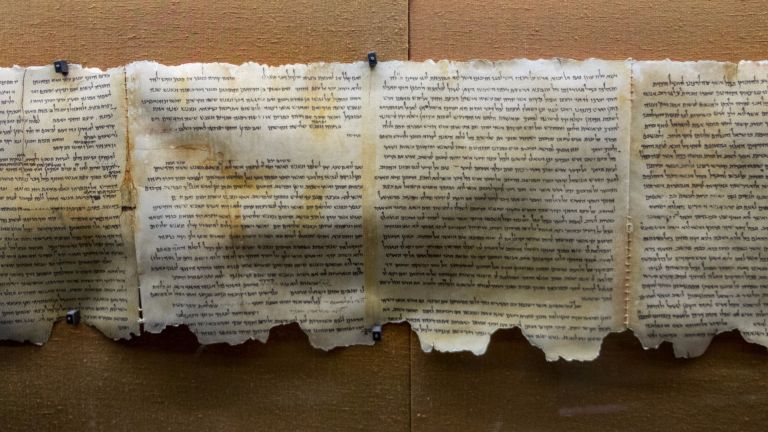The Qumran Scrolls contain some of the oldest versions of the Bible and are of great interest to Christians, Muslims and Jews
Scientists have applied genetic analysis to the Dead Sea Scrolls to determine whether the fragments of the ancient manuscripts fit together correctly, DPA and Reuters reported.
The Dead Sea Scrolls are ancient religious manuscripts containing the foundations of the Old Testament. The first manuscripts were discovered by accident by a Bedouin in 1947, and in the following years more fragments were found in 11 caves near Qumran, on the Dead Sea.
The first Qumran manuscripts were discovered by archaeologists back in 1946 in the caves of the Judean desert and the fortresses known as Masada. The manuscripts also have another name – the Dead Sea Scrolls. They represent parchments of goat and sheep skin, and also of papyrus. The texts on them are mainly written in the ancient Hebrew language, but there are also some in Aramaic and Greek. Scholars believe the manuscripts are part of a large ancient library. A third of them contain biblical texts – fragments of the Bible, from the books “Leviticus” and “Psalms”, the rest are apocrypha from the period of the so-called Second temple. Analyzes indicate that the Qumran manuscripts were created in the period 250 BC. – 68 AD
For a whole decade in the 20th century, archaeologists conducted excavations in 11 caves of the Dead Sea and found hundreds of scrolls in them. They decide that there are no more caves and stop working for a period of 60 years. Until 2006, when an American Liberty University project brought archaeologists back to the desert.
The relics passed through many hands, and because of their age they are fragmented and not well preserved. That’s why experts compare the combination of the individual over 25,000 parts to the painstaking arrangement of a giant puzzle.
However, the manuscripts have immense scientific, cultural, historical and religious significance, and researchers are looking for a solution.
Finding the manuscripts, created two thousand years ago, is the most significant archaeological find in history, according to Oded Rehavi of Tel Aviv University, Israel. The Qumran Scrolls contain some of the oldest versions of the Bible and are of great interest to Christians, Muslims and Jews, he explained.
Rehavi and his colleagues, including Noam Mizrahi of Tel Aviv University and Matthias Jakobsson of Uppsala University, Sweden, have published the results of their work in the American scientific journal Cell.
Rehavi told DPA that DNA analysis of samples of about 35 fragments confirmed that certain parts of the manuscripts were parts of a single whole. In one case, however, it was more than clear that the fragments of a single manuscript were not correctly combined as previously thought. “We found that one part of the fragments is from a manuscript on sheepskin, and a small part is on cowhide,” says Rehavi. And he adds that genetic analysis has established that the sheepskin was not from one animal.
Of the four fragments with texts from the book of the prophet Jeremiah, two are on sheepskin and the other two on cowhide, added biblical scholar Mizrahi.
“Furthermore, we found that the two sheep whose skin was used were not genetically related,” he says.
All this proves that the fragments are not only not from the same manuscript, but were created in different regions, because in the Judean desert cows could not survive.
The results of the analysis lead to the conclusion that different versions of the book of the prophet Jeremiah were circulating in the Jewish society at the same time, which is in contrast to the texts adopted later by Judaism and Christianity.
DNA analysis of many more manuscripts is pending.












